Sedgwick County Emergency Communications offers 9-1-1 Education to any community/age group to encourage the proper use of 9-1-1 and emergency services.
Be sure you and your loved ones know what 9-1-1 is, how to dial from a home and cell phone, and to trust the 9-1-1 call taker. Be aware that un-activated cellphones can still dial 9-1-1. When calling 9-1-1, know your location or address and the number you are calling from. Allow the call taker to ask their questions and stay on the line with the call taker until instructed to hang up.
Teaching Children About 9-1-1
Teaching children about 9-1-1 is one of the most important lessons you can provide to ensure their safety and the safety of those around them. Children need to understand that 9-1-1 is a tool for emergencies, and they should only use it when someone needs immediate help. Emergencies are scary situations, especially for children, so it’s vital to prepare them with the knowledge and confidence to act quickly and responsibly. Even though emergencies may be scary, calling 9-1-1 is a way to help and that their actions can make a big difference.
Make sure they understand the importance of staying calm when they call and clearly answer the call takers questions. Reassure them that 9-1-1 is there to guide them through the process and that they should always stay on the line until help arrives or the dispatcher tells them it’s okay to hang up.
Teaching children when to call 9-1-1 also involves helping them identify what qualifies as an emergency. With practice and encouragement, children can learn to recognize emergencies and feel empowered to make the right call when it matters most.
When to Call 9-1-1
1. Personal Safety and Danger:
- If someone is trying to harm them.
- If they are lost and need help.
- If they hear an alarm signaling danger.
2. Medical Emergencies
- If someone is very sick, struggling to breathe, or turning blue.
- If someone collapses, passes out, or cannot be woken up.
3. Fires and Smoke
- If they see smoke or fire.
- If they smell smoke or notice something burning.
4. Crimes and Accidents
- If they see a crime, such as a break-in.
- If they witness a car accident.
5. Uncertainty and No Adult Nearby
- If they are unsure whether it’s an emergency but cannot find an adult to ask.
Preparing Your Child
Teach your child how to answer key questions when calling 9-1-1, and have this information in a place where they can see it (on the fridge, by the phone, etc.):
- Where are you? (home address or current location)
- What is the emergency?
- What is your name and phone number?
When NOT to Call 9-1-1
Help children understand situations that are not emergencies:
- For directions or general questions.
- For lost or injured pets.
- They are bored and just want to talk.
- To play a prank.
By teaching your children about 9-1-1, you equip them with a life-saving skill they can use to assist others and stay safe in emergencies.
Resources for Kids
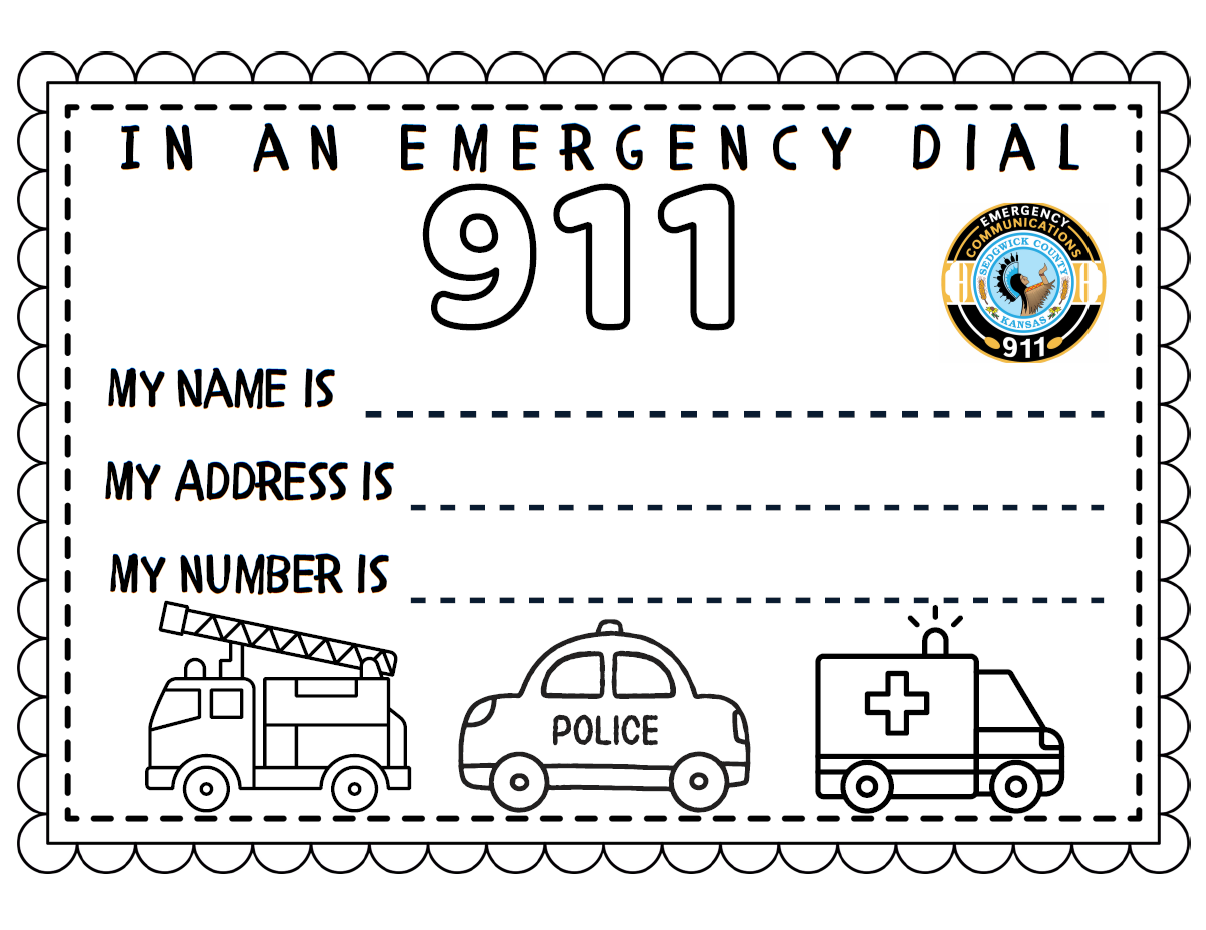
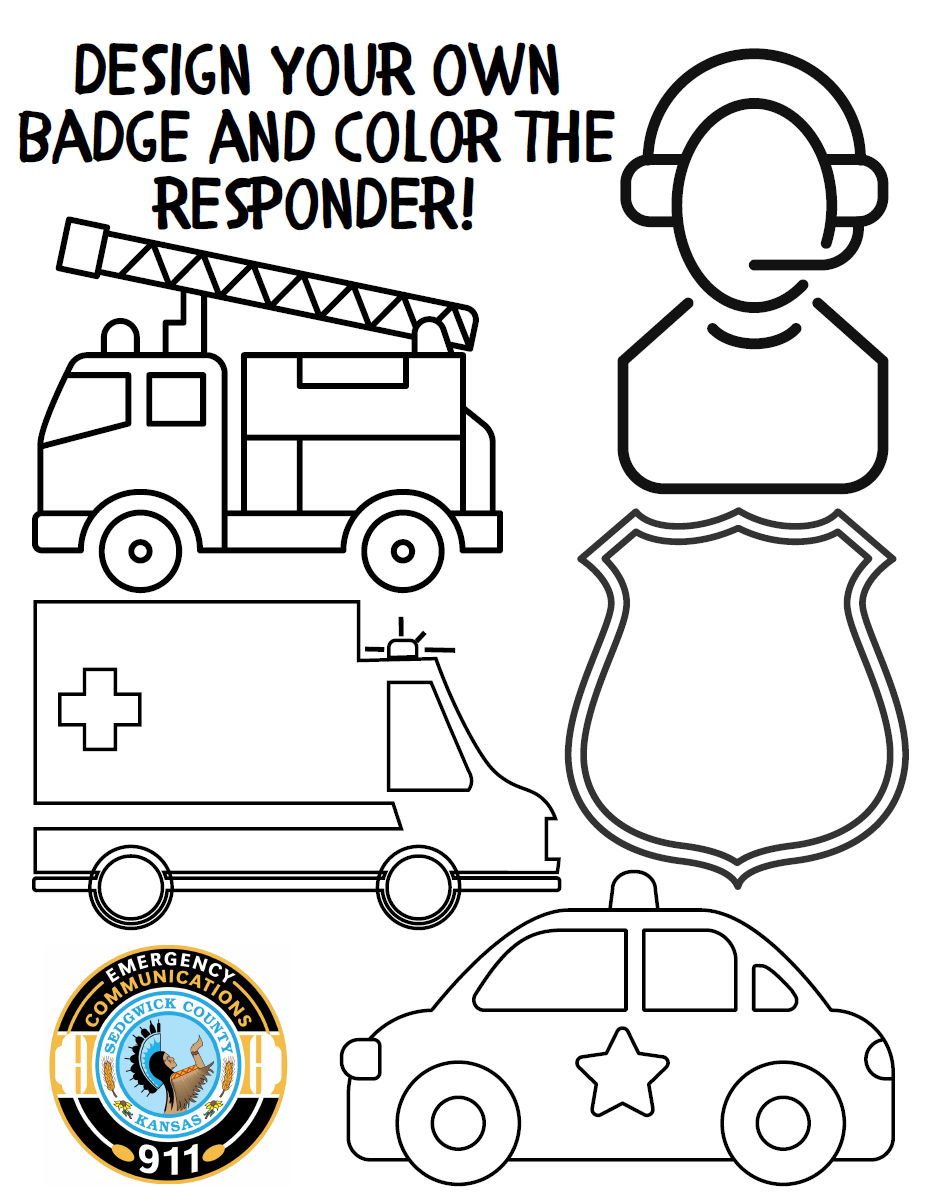
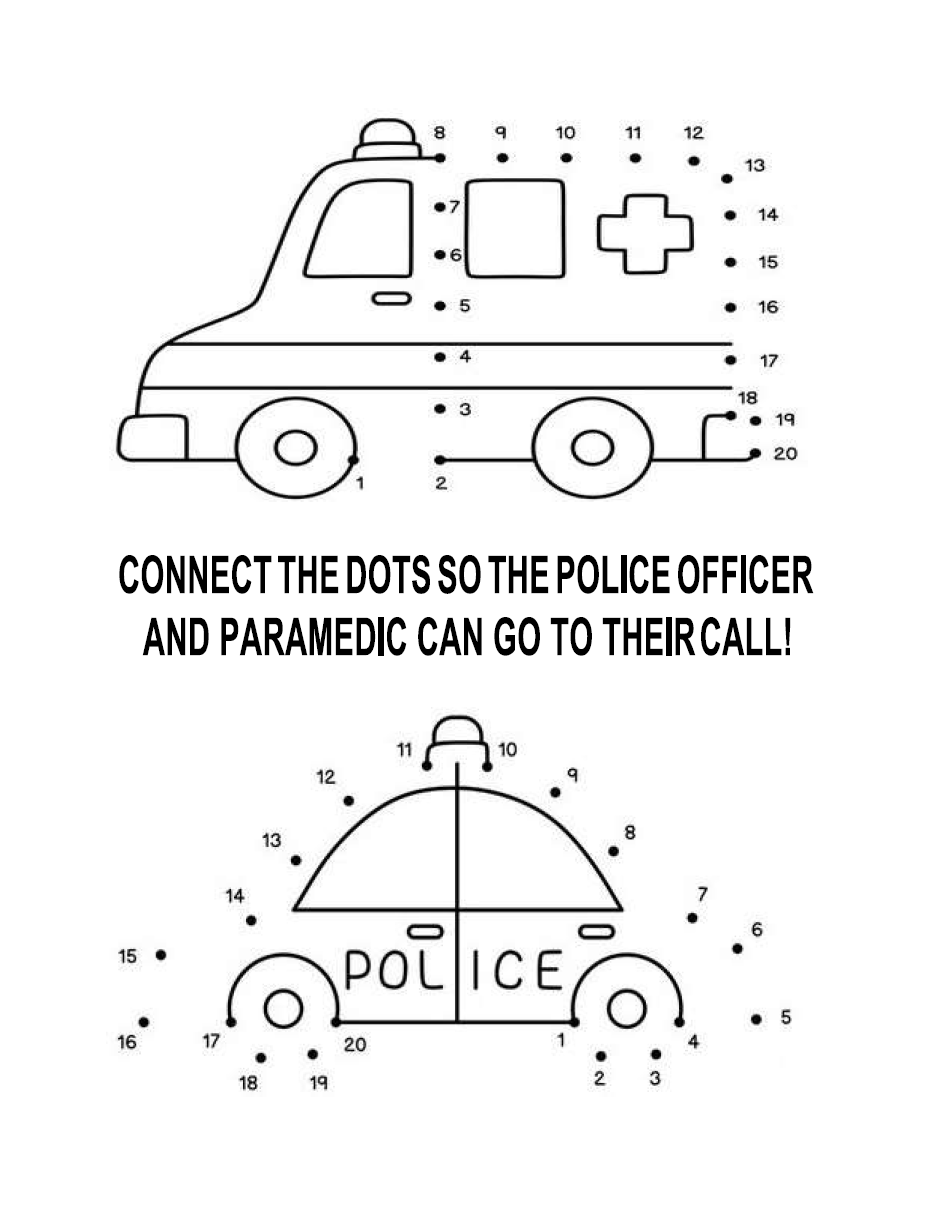
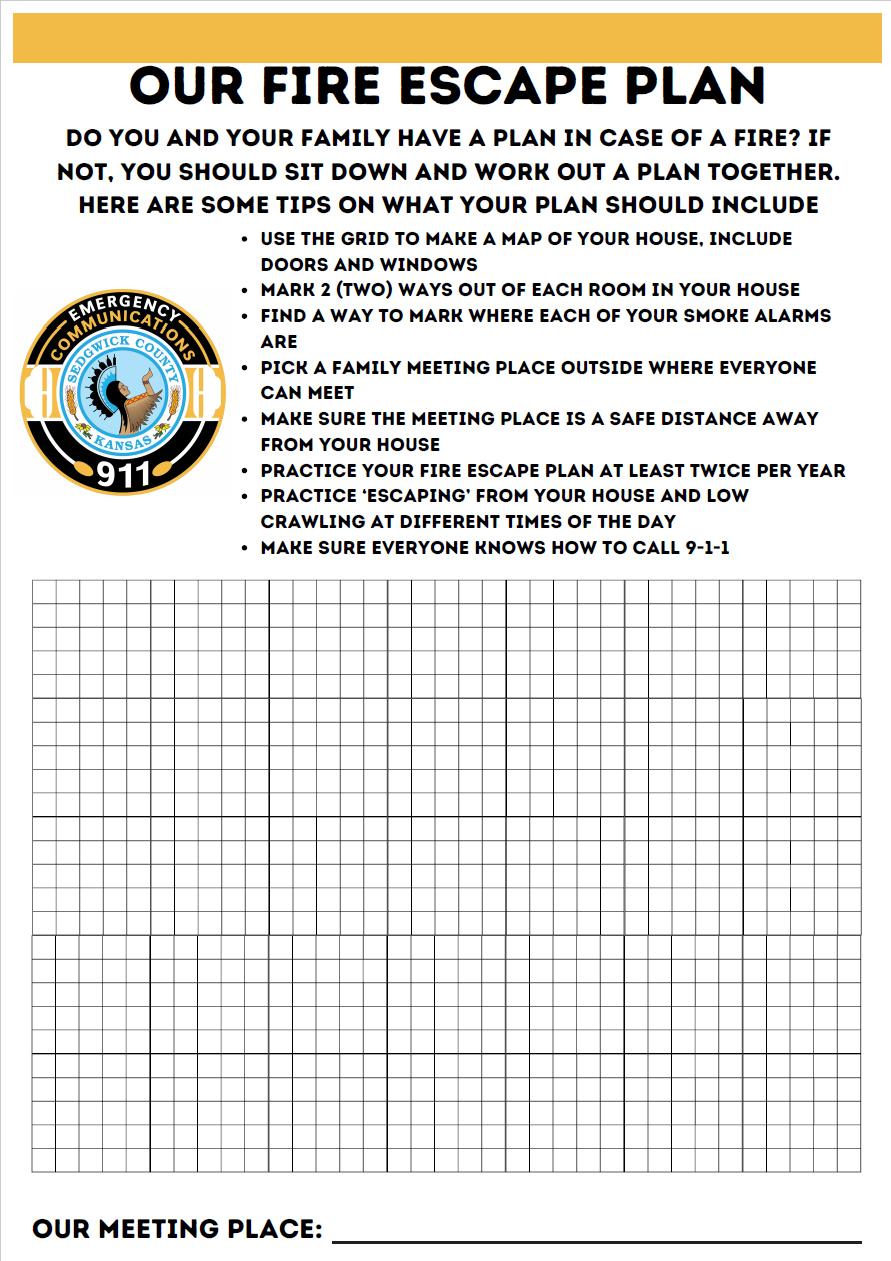
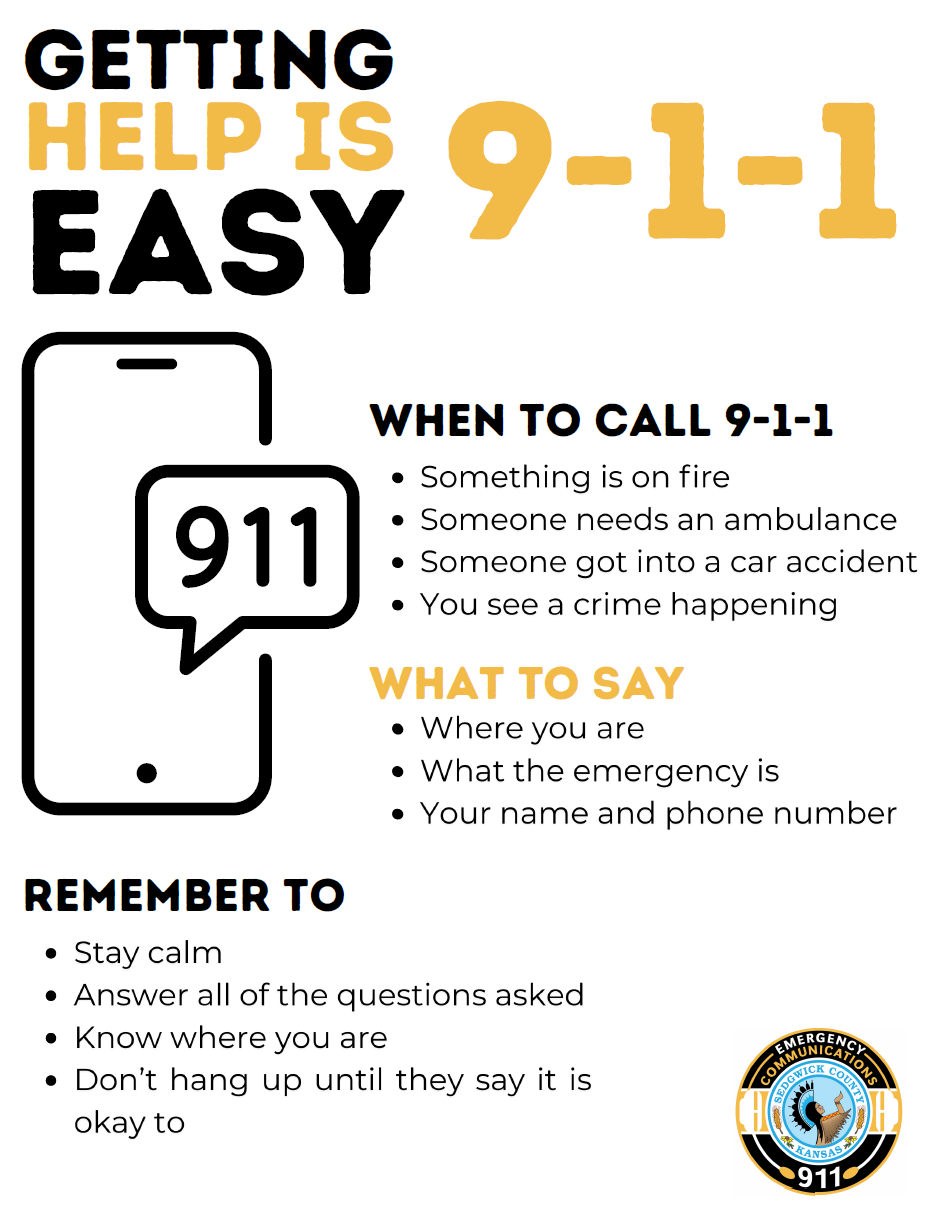
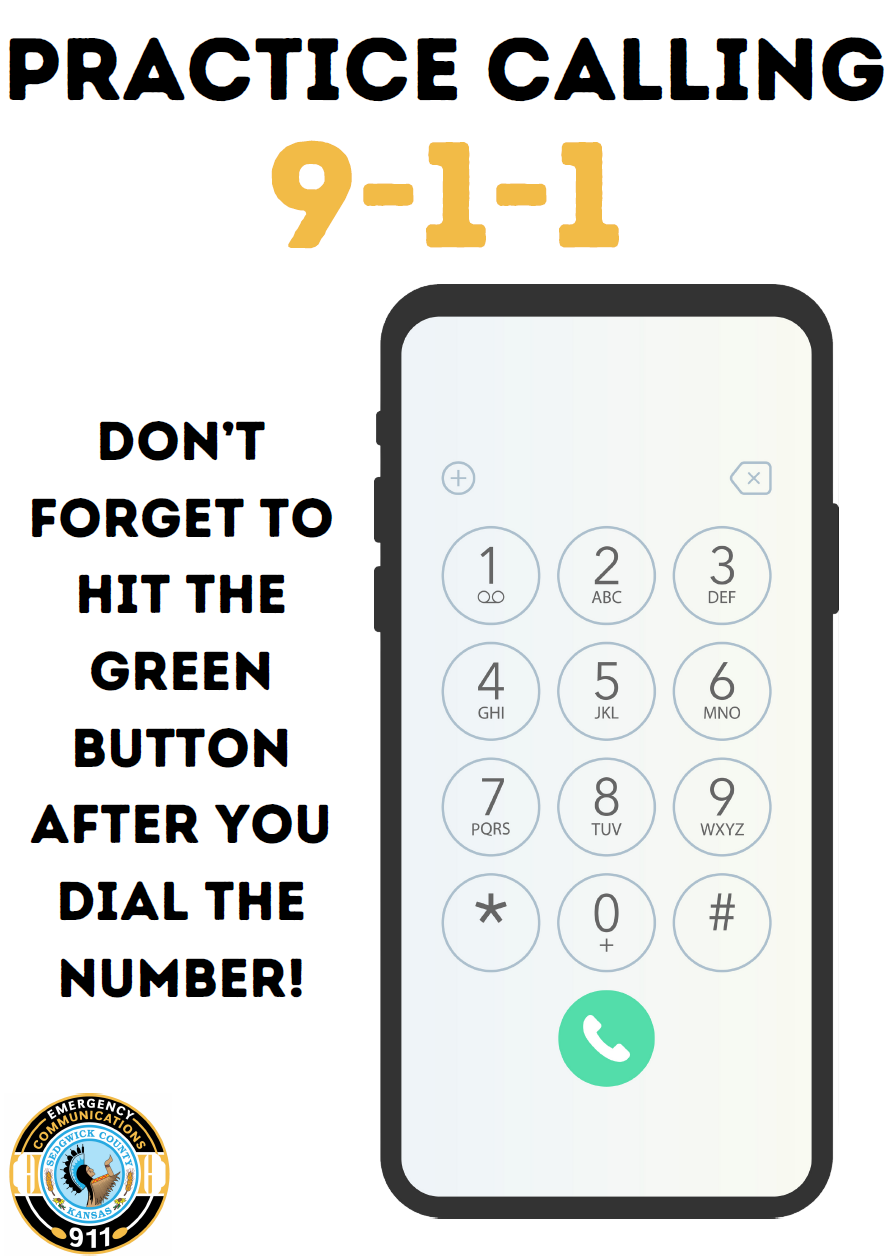
Request a Presentation
If you'd like a member of the 9-1-1 team to present information at an event or function, or through Zoom please contact Jackie Blackwell at Jackie.Blackwell@sedgwick.gov or 316-660-4977.